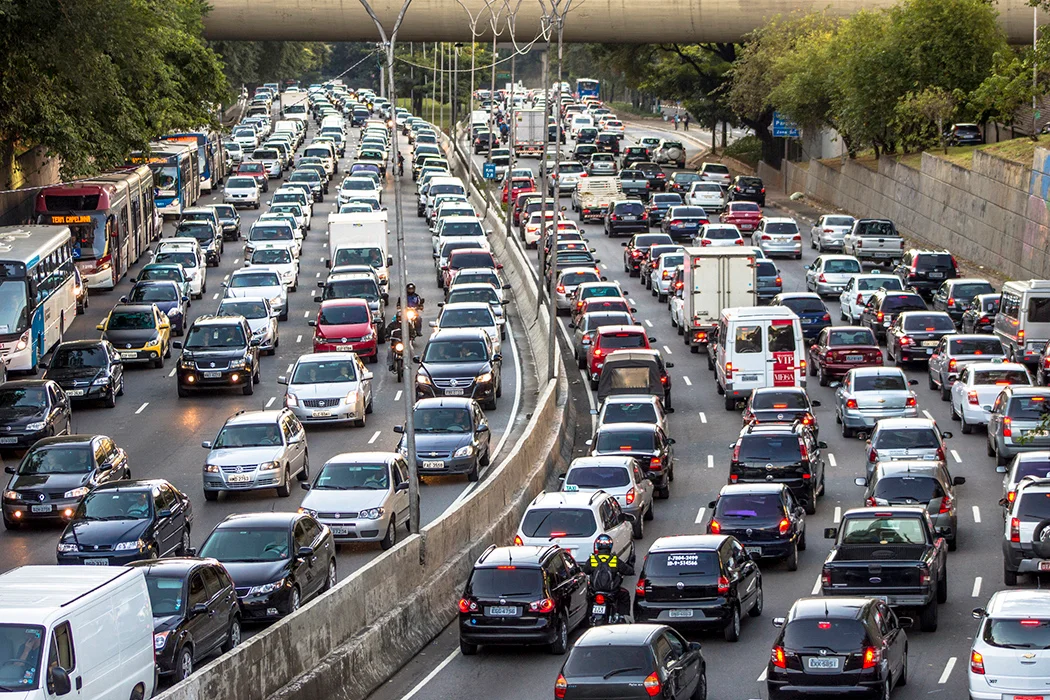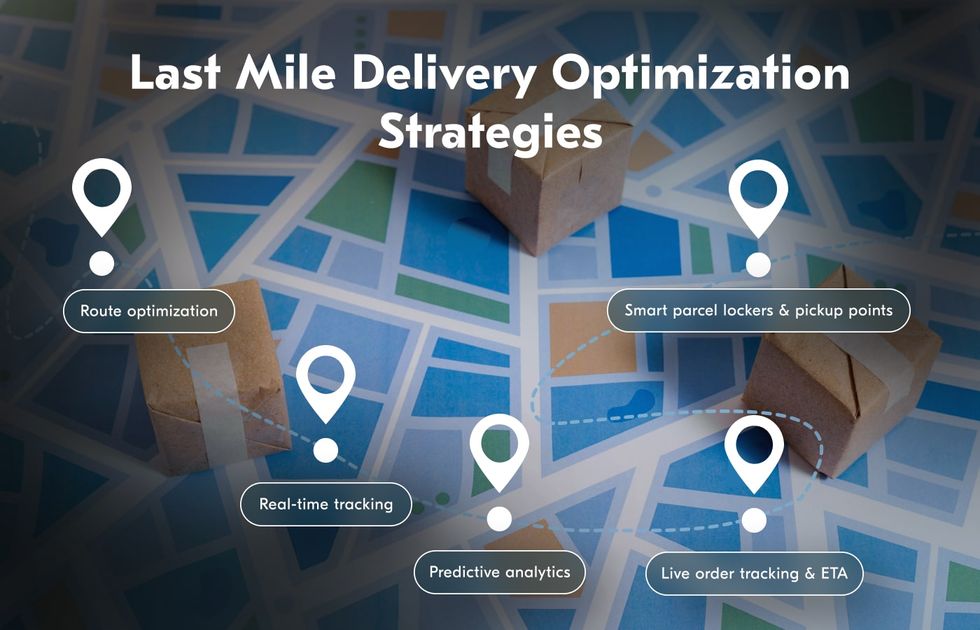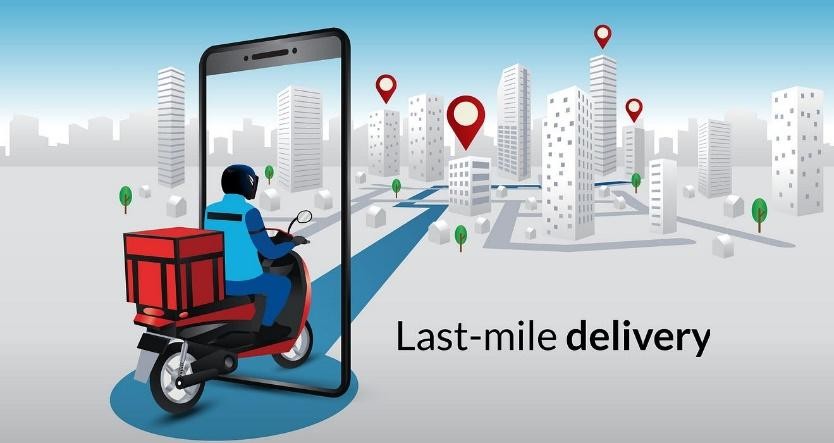Last-Mile Delivery Challenges and How to Overcome Them
9/5/2025
Introduction to Last-Mile Delivery

Last-mile delivery refers to the final step of the logistics process where goods are transported from a distribution hub to the end customer. It is often the most complex and costly stage, making it central to discussions around last-mile delivery problems and overall supply chain efficiency. With the surge of online shopping, eCommerce delivery challenges have placed immense pressure on businesses to meet rising customer expectations in delivery while reducing logistics costs. Retailers, eCommerce platforms, and logistics companies alike recognize that success depends on how well they handle this critical stage, which directly impacts customer satisfaction and brand loyalty.However, last-mile delivery is riddled with challenges such as traffic congestion, failed delivery attempts, and unpredictable demand fluctuations. To overcome these obstacles, companies are turning to logistics optimization solutions that leverage route optimization software and delivery tracking technology. These innovations not only streamline operations but also enable faster, more reliable deliveries while balancing costs. As businesses adapt to new consumer demands, the focus on improving last-mile delivery continues to grow—highlighting the need for smarter strategies that address inefficiencies and ensure seamless delivery experiences in a rapidly evolving supply chain landscape.
Why Last-Mile Delivery Is Crucial for Modern Logistics
Last-mile delivery has become a decisive factor in modern logistics because it directly shapes customer satisfaction. A smooth delivery experience is now considered as important as the product itself, with customer expectations in delivery pushing businesses to provide faster, more flexible, and transparent options. Failure to address last-mile delivery problems often results in negative reviews and lost loyalty, showing just how closely this stage ties to brand reputation. At the same time, last-mile operations represent up to 53% of total shipping costs, meaning companies must balance speed and reliability with reducing logistics costs. The rise of online shopping has only intensified these pressures, making eCommerce delivery challenges a top concern for retailers and logistics providers worldwide.To meet these demands, businesses are increasingly adopting logistics optimization solutions that improve both efficiency and customer experience. Tools like route optimization software help drivers cut delays and fuel waste, while delivery tracking technology keeps customers informed in real time, enhancing trust and convenience. Global eCommerce sales are projected to exceed $6 trillion by 2027, underscoring the urgency for scalable strategies that strengthen supply chain efficiency. Companies that invest in smarter last-mile practices not only gain a competitive edge but also secure long-term growth in a rapidly evolving marketplace.
Key Challenges in Last-Mile Delivery
1. Rising Delivery Costs
Rising delivery costs have become one of the biggest problems in logistics, driven by increasing fuel prices, higher labor wages, and ongoing vehicle maintenance expenses. These issues create significant financial strain for companies already struggling with operational pain points in the last-mile process. At the same time, customer expectations for free and fast shipping add another layer of complexity, forcing businesses to absorb costs or risk losing sales. Balancing profitability with service quality has become a critical challenge, pushing companies to seek innovative strategies that minimize expenses while still meeting evolving customer demands.

2. Route Inefficiencies and Traffic
Route inefficiencies and traffic are persistent problems in last-mile delivery, especially in densely populated urban areas. Congestion often leads to failed deliveries, delays, and rising operational costs, creating major issues for logistics providers. These pain points not only frustrate customers but also contribute to higher fuel consumption and emissions, amplifying the environmental impact of inefficient routes. With growing pressure to balance sustainability and service quality, companies must address these challenges through smarter planning and technology-driven solutions that optimize delivery paths, reduce wasted mileage, and improve overall efficiency in an increasingly complex urban landscape.
3. Customer Expectations for Speed & Transparency
Customer expectations for speed and transparency have never been higher, creating significant problems for logistics and eCommerce companies. Shoppers now expect same-day or next-day delivery as standard, putting pressure on businesses to meet tight timelines while managing costs. At the same time, real-time tracking has become essential, with customers demanding constant visibility into their orders. These issues create operational pain points, as companies must balance fast fulfillment with efficiency and reliability. Failing to meet these expectations not only risks customer dissatisfaction but also damages brand trust in a highly competitive delivery landscape.
4. Failed Deliveries & Returns Management
Failed deliveries and returns management are major problems in last-mile logistics, often resulting in significant costs from missed delivery attempts and inefficient reverse logistics. These issues create operational pain points such as wasted driver time, additional fuel expenses, and the need for extra handling and storage. Returns further complicate the supply chain, requiring careful coordination to process, restock, or dispose of goods efficiently. Without effective strategies, failed deliveries and poor returns management erode profitability while frustrating customers, making this one of the most critical challenges that logistics companies must address in order to remain competitive.
5. Scaling Operations During Peak Seasons
Scaling operations during peak seasons presents significant problems for logistics providers, especially during holidays and major sales events. Seasonal spikes in order volumes create issues such as warehouse bottlenecks, delivery delays, and limited driver availability, all of which strain logistics infrastructure. These pain points not only increase operational costs but also heighten the risk of missed customer expectations during the most critical shopping periods. Companies that fail to adapt quickly often face dissatisfied customers and reputational damage, highlighting the need for flexible strategies and scalable systems to handle demand surges effectively.
How to Overcome Last-Mile Delivery Challenges
Leveraging route optimization tools is one of the most effective ways to improve last-mile delivery performance. By using AI and GPS-based route planning, logistics teams can minimize delays, cut fuel consumption, and reduce operational costs. These tools analyze traffic patterns, delivery time windows, and driver capacity to generate the most efficient routes in real time. For example, logistics teams increasingly rely on advanced software solutions that automatically adjust routes when congestion or unexpected issues occur. This not only improves delivery speed and reliability but also enhances customer satisfaction while supporting greater overall supply chain efficiency.
Implement Real-Time Tracking & Visibility
Implementing real-time tracking and visibility has become essential for modern delivery operations, as customers increasingly expect live updates on their orders. Providing accurate tracking information not only boosts satisfaction but also builds trust by keeping customers informed about delivery times and potential delays. Transparency helps reduce failed deliveries, since recipients can better plan to be available when their package arrives. For logistics teams, real-time visibility improves coordination, enables proactive issue resolution, and streamlines communication. By adopting advanced tracking technology, businesses can strengthen customer loyalty while simultaneously improving operational efficiency and overall delivery performance.
Optimize Fleet Management

Optimizing fleet management is a critical step in addressing rising logistics challenges, and technology now plays a central role. IoT-enabled fleet tracking allows logistics teams to monitor vehicle performance, fuel usage, and driver behavior in real time, helping to reduce inefficiencies and maintenance issues. At the same time, the shift toward electric vehicles is transforming operations by lowering fuel costs and reducing carbon emissions, supporting both profitability and sustainability goals. By combining smart fleet tracking with greener transportation options, companies can enhance efficiency, cut expenses, and meet growing environmental expectations in modern supply chains.
Adopt Smart Delivery Models
Adopting smart delivery models is becoming essential for overcoming last-mile challenges and meeting growing customer demands. Parcel lockers and pick-up points provide flexible alternatives that reduce failed deliveries, while drones and autonomous delivery vehicles offer faster, more efficient solutions in certain areas. Crowdsourced delivery networks are also gaining popularity, allowing companies to scale operations quickly during peak seasons by leveraging independent drivers. These innovative models not only enhance convenience for customers but also help reduce logistics costs and environmental impact. By embracing diverse delivery methods, businesses can improve efficiency, reliability, and adaptability in a rapidly evolving logistics landscape.
Strengthen Reverse Logistics
Strengthening reverse logistics is critical for managing returns efficiently while protecting profitability. A streamlined return process helps cut costs by reducing unnecessary handling, transportation, and restocking delays, ensuring that returned products are processed quickly and effectively. At the same time, offering hassle-free returns builds customer loyalty, as shoppers are more likely to trust and repurchase from brands that make the process simple and transparent. By investing in smarter reverse logistics systems—such as automated return labels, centralized return hubs, and efficient restocking workflows—businesses can turn a common pain point into a competitive advantage in today’s customer-driven marketplace.
Case Studies:
Successful Last-Mile Delivery Optimization
Real-world examples show how companies are solving last-mile delivery problems through innovation and technology. Amazon, for instance, has invested heavily in logistics optimization solutions such as route optimization software and advanced delivery tracking technology. By building its own distribution network and integrating predictive analytics, Amazon has managed to reduce logistics costs while improving speed and reliability. These strategies directly address eCommerce delivery challenges and enhance customer expectations in delivery, positioning the company as a leader in last-mile efficiency. DHL has also demonstrated success by adopting green vehicles and smart routing tools, which improve supply chain efficiency while reducing environmental impact.Smaller businesses have also proven that last-mile solutions are not limited to global giants. For example, a regional retailer in Europe adopted route optimization software to manage its delivery fleet more effectively, cutting fuel usage and reducing failed delivery attempts. The company also implemented real-time delivery tracking technology, boosting transparency and customer satisfaction. These changes not only solved key issues but also turned pain points into competitive strengths. Together, these case studies highlight how logistics optimization solutions can be scaled to fit businesses of all sizes, helping them overcome eCommerce delivery challenges and achieve long-term operational efficiency.
Future of Last-Mile Delivery

The future of last-mile delivery will be shaped by emerging technologies and a growing focus on sustainability. Companies are already experimenting with AI, drones, and autonomous vehicles to address persistent last-mile delivery problems such as delays, high costs, and inefficient routes. Predictive analytics is set to play a major role, enabling logistics teams to anticipate demand spikes during holidays or sales events and allocate resources more effectively. At the same time, logistics optimization solutions powered by route optimization software and delivery tracking technology will continue to evolve, helping businesses balance customer expectations in delivery with the need for reducing logistics costs.Sustainability will also be central to the future of logistics, with electric vehicles, green packaging, and carbon-neutral delivery models becoming industry standards. These advancements will not only improve supply chain efficiency but also help brands address growing consumer concerns about environmental impact. For eCommerce retailers, adopting future-ready solutions is critical to overcoming ongoing eCommerce delivery challenges while enhancing reliability and transparency. Companies that embrace innovation and sustainability together will be best positioned to thrive, transforming last-mile logistics from a source of pain points into a powerful driver of customer loyalty and long-term growth.
Conclusion
Last-mile delivery problems remain some of the toughest barriers in modern logistics, from eCommerce delivery challenges and rising costs to high customer expectations in delivery. Yet, solutions are within reach. By adopting logistics optimization solutions such as route optimization software, delivery tracking technology, and smarter fleet management, businesses can improve supply chain efficiency while reducing logistics costs. Overcoming these challenges not only ensures faster, more reliable deliveries but also drives customer satisfaction and brand loyalty. To stay competitive, companies must embrace digital logistics tools today, laying the foundation for sustainable growth and long-term success in an evolving marketplace.